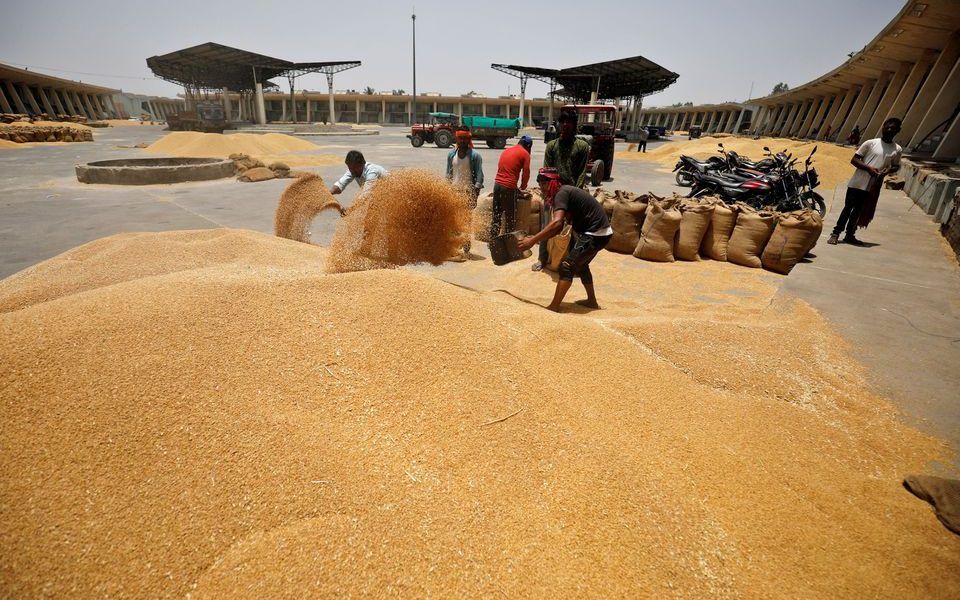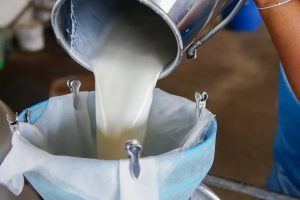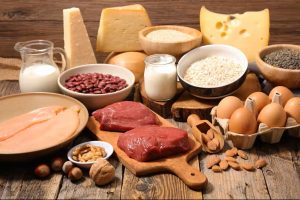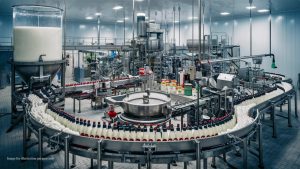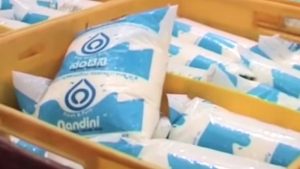
In a recent meeting. the Goods and Services Tax (GST) council decided to impose 5% GST on milk and other milk products. This decision has led to protests by dairy farmersprote in different parts of the country.
The tax has been imposed even as the cost of rearing animals has increased enormously in the recent past, due to a rise in the cost of dry and green fodder, along with a price rise in animal feed.
The heatwave witnessed in the country in April this year affected the production of wheat grain, leading to a sharp reduction in the production of wheat straw. This, in turn, led to a sharp rise in the prices of wheat straw, up from approximately Rs 200 per quintal in April-May, 2021, to Rs 500-600 in April, 2022.
This article looks at the reasons for the increase in wheat straw prices and its impact on animal rearing income.
For both farmer and rural wage worker households, income from animal husbandry has a significant share in their total income.
The Situation Assessment of Agricultural Households (SAS) report, 2019 points out in the average monthly income of farmer households, the share of farm income from crop production and animal farming was 49.7% (Rs 3,798 from crop production and Rs 1,582 from animal husbandry).
The contribution of animal husbandry in the total net receipt (after deducting the paid out cost) was 15% for farmer households. For small and marginal farmers, animal husbandry accounts for 15-16% of their net incomes. A significant share of these small and marginal farmer, and also rural manual workers (net buyers of straw), purchase wheat straw from large farmers.
Fall in production
In our survey of a Punjab village during March-April 2022, we found that due to the heat wave, the production of wheat witnessed a decline. Consequently, the yield of wheat straw also diminished, by 25% (from about 12 quintals per acre to 9-10 quintals per acre). This reduction was sharp.
Previously, the rise in the use of combine harvesters and straw reapers had resulted in a decline in the yield of wheat straw by approximately 40%. In other words, the yield of wheat straw when wheat was harvested manually used to be approximately 20 quintals per acre, but with the use of reapers, it has fallen to roughly 12 quintals per acre.
The yield of wheat straw has declined for two reasons. First, combine harvesters, when used, extract and destroy a part of the wheat straw. Second, reapers, when used, leave a part of the wheat straw as uncut residue. Given the existing agrarian conditions, however, it is not viable for farmers to replace workers using combine harvesters and reapers with workers expending manual labour for such operations.
Uses of wheat straw in power sectors and brick kilns
On one hand, the increase in the prices of diesel has led an increase in the cost of production of straw, leading to an increase in its prices. Another important reason for the rise in prices of wheat straw has been the rise in the use of wheat straw in power plants and brick kilns.
With the removal of restrictions on private sector intervention in the coal sector since 2020 (with the promulgation of the Mineral Laws (Amendment) Ordinance, 2020) the price of coal has been rising. This has led to a decline in coal use for power plants and brick kilns. In our surveyed village, approximately 20% of the total wheat straw was purchased by power producers.
Wheat straw is also being used as an input in brick kilns. The rise in the prices of coal had initially led to the use of rapeseed and chickpea straw in brick kilns, however, in recent years, the uses of wheat straw in brick kilns has increased sharply.
Increase in the prices and rural households
The rise in wheat straw prices also adversely impacts the other source of subsistence income for small and marginal farmers and wage workers – animal rearing. Besides, the rise in the prices of animal feed and the like has also increased the cost of animal rearing, resulting in lower incomes for small and marginal farmers and wage workers.
The primary beneficiaries of the increase in prices of wheat straw have been large farmers, who tend to be net sellers of wheat straw. Small and marginal farmers and wage workers tend to bear the brunt of the increased cost of animal rearing. The income from animal rearing, in most cases, might turn out to be negative.
Taking into account imputed and paid out costs, income from animal rearing per household was merely Rs 441 per month, as per the SAS report, even as the NSS data under-reports costs. In many states, this income was, in fact, negative; animal rearing has become unviable.
As far as small and marginal farmers were concerned, after taking into account paid out and imputed costs, they were able to earn incomes of Rs 541 per month and approximately Rs 350 per month, respectively, from animal rearing. Large farmers were able to generate net receipts of Rs 7,087 per month from animal rearing.
Given that animal rearing is a significant source of income for small and marginal farmers, as well as rural wage workers, the government needs to focus on alternative policies to deal with the adverse consequences of the rise in wheat straw prices. This has come over-and-above a fall in real wages.
A number of policy steps are required to deal with this crisis. First, the state should provide subsidies on animal feed to reduce the cost of animal rearing. Second, a Fair and Remunerative Price (FRP) for milk needs to be provided to dairy farmers. Third, alternative techniques that are relatively more ecologically could be promoted in both power generation and the production of bricks. Fourth, incomes of small and marginal farmers (and wage workers) could be enhanced by the provision of both, additional days of employment and higher wages under the Mahatma Gandhi National Rural Employment Guarantee Scheme (MGNREGS).
